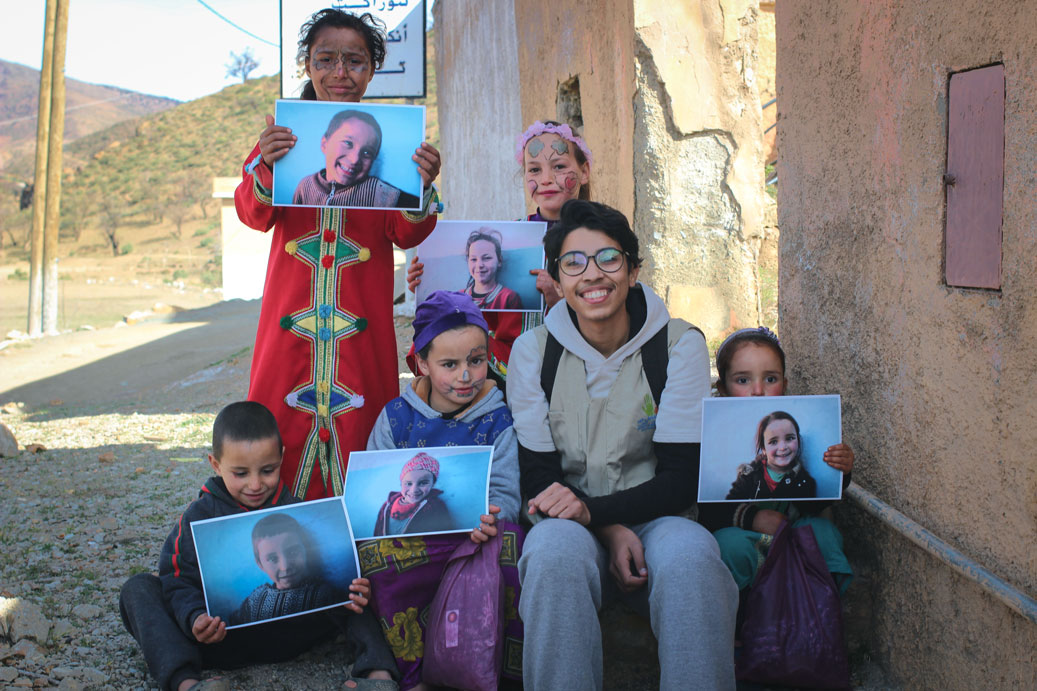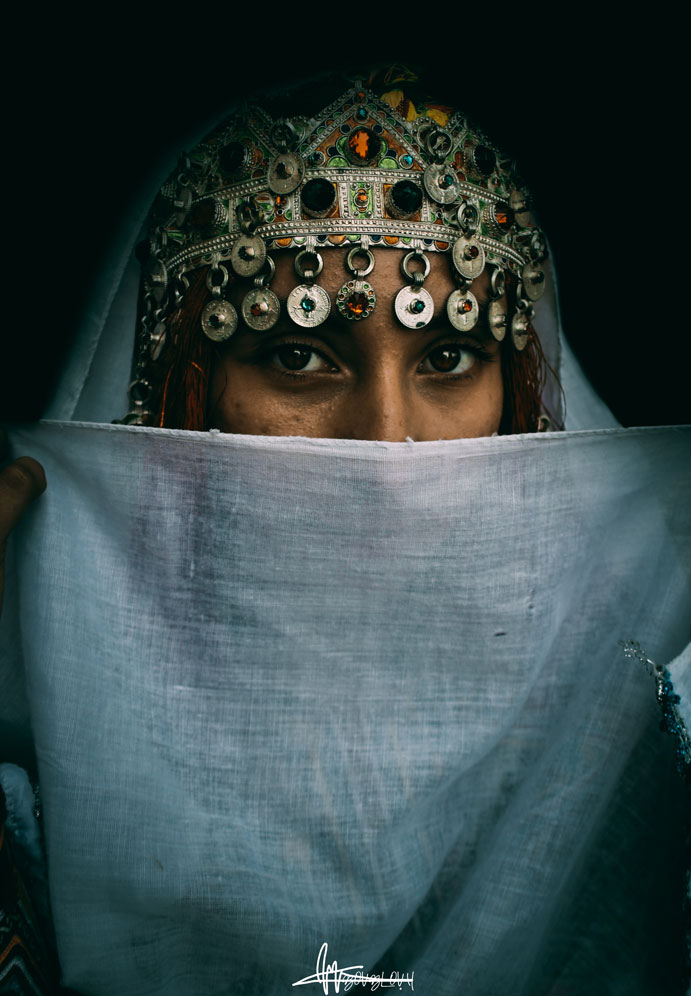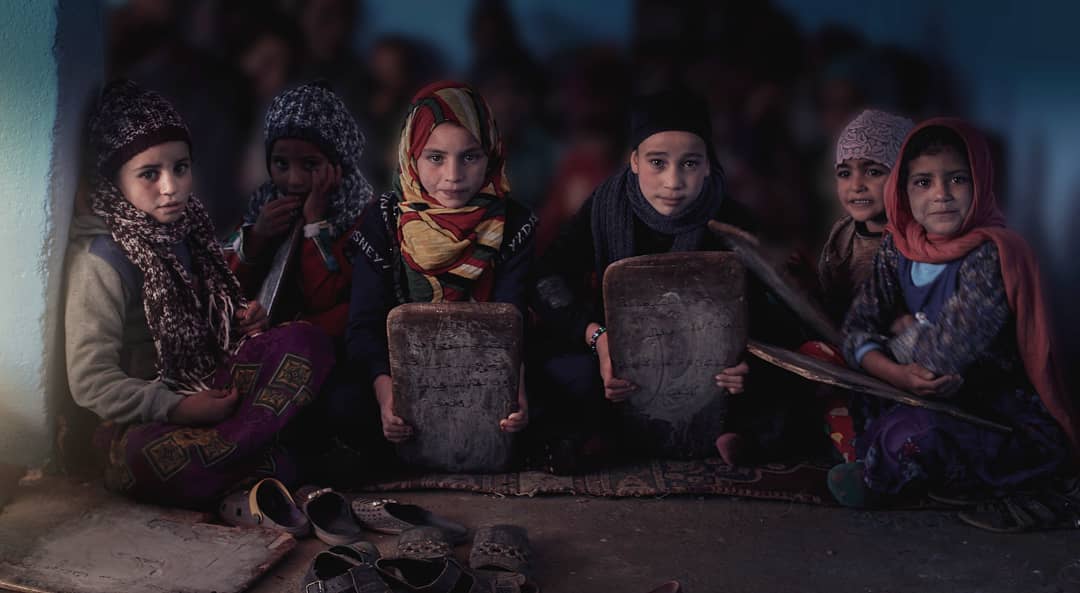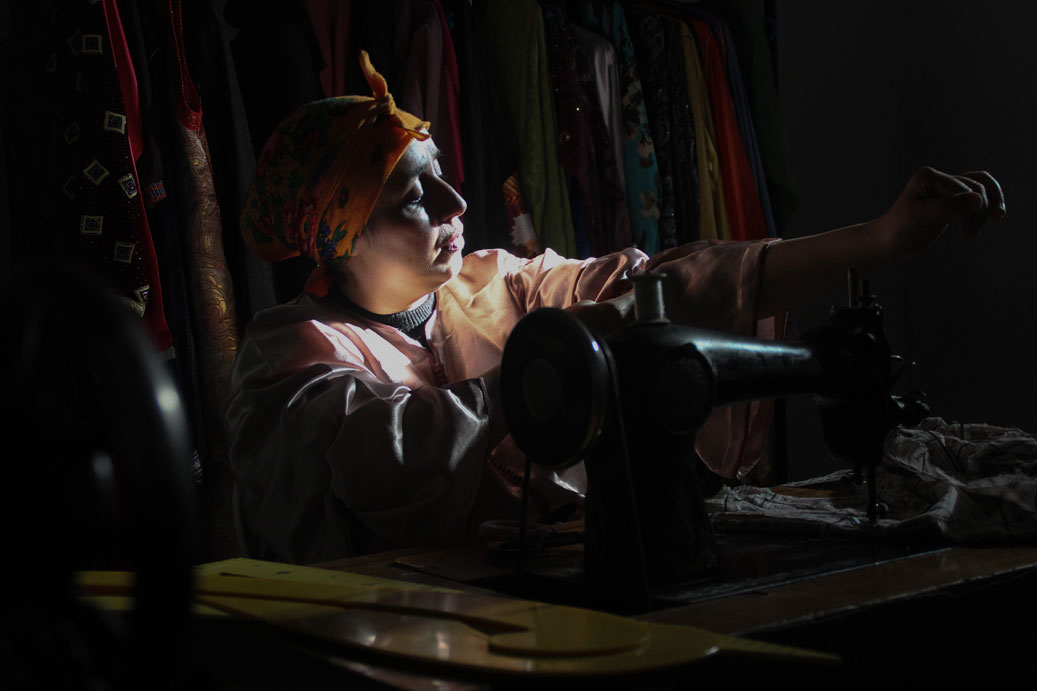A Moroccan photographer documents the happiest moments of the villages’ children
Three years ago, the Moroccan young man, Mohamed Boublouh, took his camera and set off his journey. The first photo he took was for his mother while she was working in her sewing workshop.
A photo full of love led Mohamed to be awarded a photography prize and later paved the way for him in the world of photography.

He likes to take photos especially those of Moroccan children. Each collection of photos has a story, probably the most important of which is Mohamed’s story in the eyes of each child of whom he takes a photo. To put it simple, Mohamed “feels those children are a younger version of himself.”
What is unique about Mohamed is his keenness on printing his photos and present them to the children as a gift. In an interview with Tiny Hand, Mohamed says, “I would feel extremely happy if I were that child and someone took a photo of me, printed it, and gave it to me as a gift.”
However, this is not only what encouraged Mohamed to photograph children. There is a much deeper and far-reaching idea, as he explains, “I see children as a reflection of the environment in which they live. They reflect the group’s belief, behavior and philosophy.
Children do not hesitate to do or say what they like. It is the result of the place they live in. They represent a great deal of raw beliefs and ideas that have not been scrutinized yet.”
Mohamed’s words are clearly reflected in his first photo collection entitled “Moroccan Villagers,” taken in Taounate town in the High Atlas Mountains in the vicinity of the Moroccan city of Taroudant.
At that time, Mohamed was traveling to Moroccan villages along with voluntary societies, documenting their trips, and working on his photo collection at the same time.
“The voluntary work extended for several weeks, as it included repairing a school and distributing aid. I accompanied them in their travels. I took photos of the children on the first day and resumed doing so on the last day of the voluntary work,” Mohamed narrated.
The children’s joy at photos cannot be described in words. In addition, Mohamed found it special to document those joyful moments by recording this video clip.
As for the responses to that video, Mohamed told Tiny Hand, “When I posted the video in my social networking accounts, it received positive responses, as it was shared by many people. I think the condition of the Moroccan children and villagers in general has improved, however, their suffering is undeniable. I have recently felt the community has become more aware of this serious issue. I think this is attributed to the increased use of Internet and the easy access to information.”
Mohamed is currently working on a new project that he will take photos of Amazigh villages. “I hope my idea would be developed and documented,” Mohamed said.
In addition to this activity, the young Moroccan man studies at a Moroccan university, majoring in the English Literature.
Asked to choose three most beloved photos for him in his collection and accounting for his choices, Mohamed said,
“The first photo is for a young Amazigh woman wearing the traditional dress of the tribes of southern Morocco. I enormously like documenting my own culture; the Amazigh Culture.”

“The second photo is of girls in the traditional school. Most of parents in the Moroccan towns prevent girls from completing their studies at a certain age. I see those girls are determined to learn and stand up against illiteracy in the mosque or “Timzgida” as it is called in Shilha language.”

The third photo is of my mother. I photographed my mom while she was in her sewing workshop. It was the first photo with which I participated in a competition and I was awarded. I consider it to be the beginning of my career as a photographer.”

Tags
Related Posts
Moroccan nurses celebrate the birthday of a child infected with the COVID-19
It was a day full of celebrations. The nurses, did not miss celebrating the birthday of Alaa, who was infected with the COVID-19….
May 17, 2020The video that enraged Moroccans: the child talks about what happened to him and his sheep
The roar of the engine of a car driven madly at high speed burst into child Ayman’s ears while his scared ewes making louder plaintive bleating….
May 14, 2020


